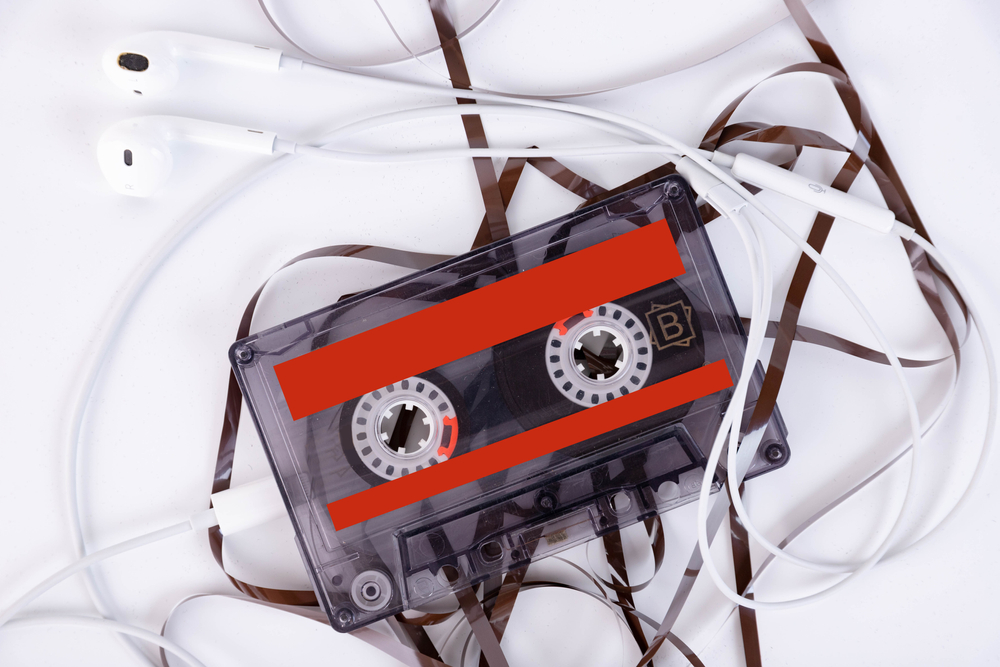Top 10 Inventions That Boosted Our Listening Pleasure

Music has the power to carry us to the past or any place in time. But thanks to evolving technology, we can carry tunes wherever we go. Learn the inventions that impacted how we enjoy music, which offers a sneak peek into the future of our listening pleasure.
Music has always been a constant part of human history–from ancient rituals and ceremonies to cultural preservation and community building. But what changed through the years is the way we listened to our favorite tunes. From old-school music players to today's streaming platforms, audio-listening devices have undeniably shaped our music appreciation.
To better understand this evolution, we walk you through the 10 most significant inventions in modern times. Who knows? These may also give us a preview of how we will enjoy music in the future.
Also read: How AI Is Turning the Music Industry on Its Ear
Top 10 Inventions for Listening to Music
- Phonograph
Invented by Thomas Edison in 1877, the phonograph is one of the earliest innovations that propelled the development of the music industry.
The device functioned with cylinders with a textured surface. A needle is attached to a diaphragm and touches the cylinder's grooves. When the microphone picks up sounds, it causes the diaphragm to pulsate and the stylus to go across the cylinder grooves. These vibrations turn into electrical signals, which are magnified and played back. In time, the cylinders were replaced by discs or records.
Because of the phonograph, the masses could listen to music and speeches in the comfort of their own homes–a breakthrough even during those times.
- Gramophone
An improvement to the phonograph, the gramophone uses flat discs instead of cylinders. Invented by German-born Emile Berline, the gramophone is inspired by Edison's invention, with discs with sound-capturing grooves on their surface. These grooves are then replicated on other discs through "disc-cutting", paving the way for recorded music's mass production and distribution.
- Victrola
The Victrola, produced by the US-based Victor Talking Machine Company, was registered in 1906 as an internal horn phonograph synonymous with high-quality sound.
This invention was fueled by business owner Idridge Johnson's passion for excellent sound quality. His company sold phonographs, gramophones and records and manufactured them. Because Johnson focused on constantly improving sound reproduction and playback, his business quickly built a reputation for producing top-notch products. As a result, the Victor Talking Machine became one of the market leaders in the early recording industry.
- High-fidelity recording
The 20th century marked the advent of high fidelity or "hi-fi", which refers to the high-quality recording of audiovisual elements. This technology started in the 1920s with the advent of microphones and other sound amplification tools. But hi-fi took off during the 1960s and 1970s along with technological advancements and affordability. With hi-fi, music and movie lovers enjoyed sounds and images close to their original quality, minus ambient noise and distortion. Because of this, hi-fi became the sole standard for audio recording.
- Reel-to reel machine
One of the earliest hi-fi recorders is the reel-to-reel machine created in the 1940s. Boosted by German technology, this device was widely adopted by the American music industry with its efforts to produce high-quality recordings.
The reel-to-reel machine used a magnetic recording tape encased in a reel, whose end is connected to another reel. As the first reel records the sound, the tape is transferred to the second reel–similar to a cassette tape, but with superior audio precision.
The popularity of movies with dialogues also promoted the use of reel-to-reel machines. This enhanced the public's movie-watching experience with high-quality sounds from theater speakers. Today, these machines are considered collectors' items.
- LP
Peter Goldmark invented 12-inch vinyl discs in the late 1940s– a vast improvement to the previous discs made from shellac, a natural resin that tended to be heavier and more brittle. With vinyl made from plastic-type polyvinyl chloride (PVC), disc grooves can be smaller, allowing music companies to record more tunes on one side of the record. This gave birth to the long-playing record (LP), which could play about 30 minutes of music on each side. Another advantage of vinyl over its predecessor is clearer and more robust sound, which made LPs a popular music format for decades.
- 8-Track
Gaining popularity in the late 1960s and 1970s, the 8-track tape got its name for the four stereo tracks, each capable of holding 15 minutes of sound. With this, listeners could enjoy uninterrupted music of about 45 minutes to an hour with each tape.
With the magnetic tape encased in a plastic cartridge, this format was widely used in cars, with car makers installing compatible players as original equipment or aftermarket purchase. The cartridge fits in the player, which engages the tape and makes contact with the tape head for playback.
- Cassette tape
The cassette is a more compact version of the 8-track, producing better sound quality because of its narrower tape width and slower tape speed. Its plastic casing has two spools for the supply and take-up reels, which allows the tape to move across the tape head during playback. Unlike the 8-track, you can flip the tape over to access the reverse side. The cassette also allowed rewinding, fast-forwarding, and pausing.
Aside from playing back music, cassette tapes were also used for personal recording, with some players having these built-in recording features. Throughout the decades, the audio quality of these tapes has upgraded, thanks to the introduction of new materials like metal alloy tapes.
A widely-loved invention born from the cassette tape is Sony's Walkman, introduced in 1979. Though it wasn't the first portable player in the market, the Walkman was convenient, needing only two small batteries to function, and with a headphone jack for private listening. The popularity of Walkmans and similar models from other companies was why cassette tapes finally exceeded the sales of vinyl records in 1983.
- Compact discs
Introduced in the 1980s, compact discs or CDs are flat discs measuring about 12 centimeters in diameter. While it is used for audio playback, it also serves as data storage. A typical CD can contain up to 700 megabytes of data, equivalent to approximately 80 minutes of high-fidelity audio.
At the same time, CDs delivered excellent sound quality and better durability. While portable players called Discmans offered on-the-go listening, CD technology was also used in computers for installing software and data backup.
- MP3
After CDs came the rise of the MP3, which is short for MPEG-1 Audio Layer 3. Its smaller file size and acceptable sound quality made it perfect for sharing over the internet and storing in portable music players, including smartphones. There's no doubt that MP3s revolutionized music consumption, sparking the proliferation of online music stores and more compact portable players. This development laid the foundation for streaming services that dominate today's music scene.
Also read: The New Era of Live Music
But whatever the format, music will always be a mainstay in our lives, allowing us to express ourselves better, uplift our mood, and connect with others. It is a powerful artistic and emotional outlet that enriches our lives in many ways.

As one of the Top 19 EMS companies in the world, IMI has over 40 years of experience in providing electronics manufacturing and technology solutions.
We are ready to support your business on a global scale.
Our proven technical expertise, worldwide reach, and vast experience in high-growth and emerging markets make us the ideal global manufacturing solutions partner.
Let's work together to build our future today.
Other Blog



